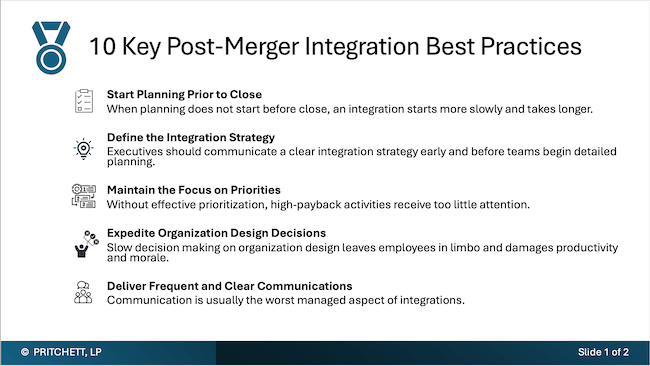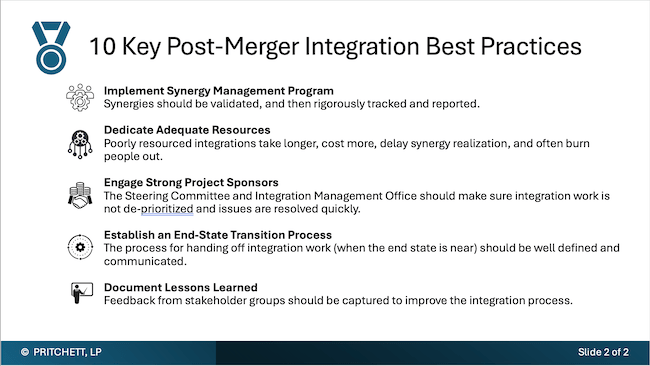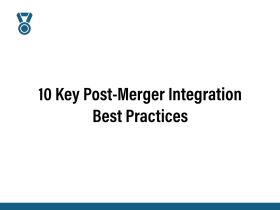Start Planning Prior to Close. When planning does not start before close, an integration starts more slowly and takes longer.
Define the Integration Strategy. Executives should communicate a clear integration strategy early and before teams begin detailed planning.
Maintain the Focus on Priorities. Without effective prioritization, high-payback activities receive too little attention.
Expedite Organization Design Decisions. Slow decision making on organization design leaves employees in limbo and damages productivity and morale.
Deliver Frequent and Clear Communications. Communication is usually the worst managed aspect of integrations.
Implement Synergy Management Program. Synergies should be validated, and then rigorously tracked and reported.
Dedicate Adequate Resources. Poorly resourced integrations take longer, cost more, delay synergy realization, and often burn people out.
Engage Strong Project Sponsors. The Steering Committee and Integration Management Office should make sure integration work is not de-prioritized and issues are resolved quickly.
Establish an End-State Transition Process. The process for handing off integration work (when the end state is near) should be well defined and communicated.
Document Lessons Learned. Feedback from stakeholder groups should be captured to improve the integration process.





